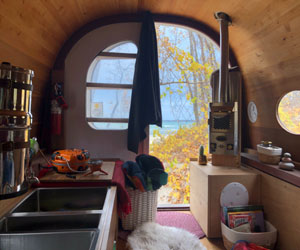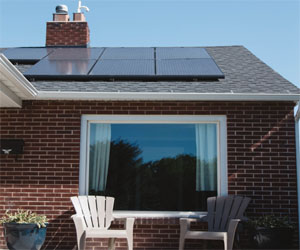


Revolutionizing Cleaning For A Sustainable Future

The quest for sustainability has sparked innovative approaches in various aspects of life, including cleaning. Green cleaning innovations are transforming the way we approach household and industrial cleaning, offering eco-friendly solutions that minimize harm to the environment and improve indoor air quality. In this article, we'll explore some of the latest green cleaning innovations and their potential to create a cleaner, healthier, and more sustainable world.
1. Microbiome-Friendly Cleaning Solutions
One of the most recent green cleaning innovations focuses on preserving the balance of indoor microbial ecosystems. Traditional cleaning products can disrupt these ecosystems, potentially leading to health issues and poor indoor air quality. Microbiome-friendly cleaning solutions aim to maintain a healthy balance of microorganisms in our homes. These products contain beneficial probiotics that outcompete harmful bacteria, resulting in a naturally cleaner and healthier environment.
2. Nanotechnology For Efficient Cleaning
Nanotechnology is revolutionizing the cleaning industry by providing highly effective, eco-friendly solutions. Nano-scale particles in cleaning products penetrate surfaces more effectively, making it easier to remove dirt, stains, and grime without the need for harsh chemicals. Additionally, the reduced need for chemical additives in these products results in a smaller environmental footprint.
3. Eco-Friendly Packaging
Green cleaning isn't limited to the contents of the cleaning products but also extends to the packaging. Innovations in packaging include the use of recycled and biodegradable materials, as well as more efficient and space-saving packaging to reduce transportation costs and emissions.
4. Smart Cleaning Appliances
Smart cleaning appliances equipped with sensors and AI technology are making cleaning more efficient and eco-friendly. These devices can optimize cleaning routines, minimizing resource waste by adjusting water usage, detergents, and energy consumption based on the specific cleaning needs. For example, robotic vacuum cleaners can map out your home and clean only the areas that need attention, saving both time and energy.
5. Waterless Cleaning Technologies
Waterless cleaning innovations are revolutionizing the way we think about cleaning tasks that traditionally require large amounts of water. Dry steam cleaning, for example, uses superheated steam to clean and sanitize surfaces without the need for chemicals or excessive water usage. These methods are not only more environmentally friendly but also more efficient.
6. Sustainable Cleaning Pads
Innovative cleaning pads made from sustainable materials like bamboo or recycled fibers are not only effective at capturing dirt and dust but are also biodegradable. They offer a green alternative to disposable cleaning pads that contribute to waste and pollution.
7. Chemical-Free Electrolyzed Water Cleaners
Some cleaning appliances now generate electrolyzed water on the spot by passing an electric current through a mixture of water and salt. This creates a powerful, non-toxic cleaning solution that effectively sanitizes surfaces, eliminating the need for chemical cleaning agents.
Benefits Of Green Cleaning Innovations
Improved Indoor Air Quality: Green cleaning innovations typically reduce the release of volatile organic compounds (VOCs) and harmful chemicals, leading to better indoor air quality and improved respiratory health.
Lower Environmental Impact: These innovations often result in reduced water and energy consumption, less waste, and a decreased overall ecological footprint.
Cost-Efficiency: Many green cleaning technologies ultimately lead to cost savings, as they reduce the need for expensive cleaning products and minimize resource use.
Healthier Living Spaces: Innovations that reduce the use of harsh chemicals create safer and healthier living environments, especially for individuals with sensitivities and allergies.
Green cleaning innovations are at the forefront of a sustainable future. These advancements not only enhance the effectiveness of cleaning but also reduce environmental impact, cut costs, and promote healthier living spaces. By embracing these innovations, we can all contribute to a cleaner, greener world.
Thriving In Compact Living
 1. Multifunctional Furniture
1. Multifunctional Furniture
One of the key principles of small space efficiency is multifunctional furniture. These pieces serve multiple purposes, allowing you to make the most of every square inch. Sofa beds, fold-out desks, and dining tables with hidden storage are excellent examples. They provide comfort and functionality without monopolizing valuable space.
2. Vertical Storage
Utilizing vertical space is a game-changer in small spaces. Wall-mounted shelves, cabinets, and hooks create storage opportunities while keeping the floor area open and uncluttered. Vertical storage can also lend a sense of height and depth to your small space, making it feel more expansive.
3. Clear Clutter Regularly
Living in a small space necessitates regular decluttering. Be selective about what you keep, and embrace the philosophy of "less is more." Donate or sell items you no longer need, and make a conscious effort to prevent new clutter from accumulating.
4. Dual-Purpose Rooms
In small homes, one room often serves multiple functions. For instance, your living room might double as a home office, or your bedroom may also function as a gym. Careful planning and the use of flexible furniture can help you transition seamlessly between these different roles.
Compact Living With A Sustainable Touch
 Sustainability: Small footprint homes are known for their sustainability. The reduced size and efficient design mean fewer materials are needed for construction, resulting in a smaller environmental footprint. Many small footprint homes also incorporate eco-friendly materials and energy-efficient systems.
Sustainability: Small footprint homes are known for their sustainability. The reduced size and efficient design mean fewer materials are needed for construction, resulting in a smaller environmental footprint. Many small footprint homes also incorporate eco-friendly materials and energy-efficient systems.
Cost-Effective: Smaller homes are generally more affordable, making homeownership accessible to a broader range of people. Reduced utility costs and maintenance expenses contribute to long-term savings.
Minimalism: Small footprint living encourages minimalism, a lifestyle that prioritizes quality over quantity and focuses on reducing clutter and material possessions. This approach often leads to a simpler, less stressful way of life.
Embracing Self-Sufficiency And Sustainability
 Key Principles Of The Off-Grid Living Movement:
Key Principles Of The Off-Grid Living Movement:
Self-Sufficiency: At the heart of the off-grid living movement is the desire for self-sufficiency. Off-gridders aim to provide for their own basic needs, such as energy, water, and food, without relying on external infrastructure. They often employ renewable energy sources, such as solar panels and wind turbines, and use water collection and purification methods.
Sustainability: Sustainability is a cornerstone of off-grid living. This lifestyle emphasizes responsible and eco-conscious practices, from recycling and composting to sustainable agriculture and permaculture. Off-gridders typically seek to minimize their ecological footprint and reduce waste.
Resourcefulness: Off-grid living requires resourcefulness. Those who embrace this lifestyle must be creative and adaptive to overcome the challenges of living independently. They often build their homes using natural materials and repurpose everyday items to serve multiple purposes.
Connection With Nature: Off-grid living fosters a deep connection with the natural world. Many individuals who choose this lifestyle opt for remote locations, surrounded by the beauty of nature. They often forage for wild edibles, learn about local ecosystems, and live in harmony with the environment.
Minimalism: Minimalism is a common theme in off-grid living. By reducing the reliance on modern conveniences and material possessions, individuals often discover a simpler and more meaningful way of life.
Cultivating More Than Just Plants
 Mental Health Benefits
Mental Health Benefits
Mindfulness: Gardening encourages mindfulness, as it requires you to be present in the moment. The act of nurturing plants allows you to disconnect from daily stressors.
Improved Mood: The visual appeal of a well-tended garden can bring about a sense of achievement and happiness. The act of watching plants grow and bloom is therapeutic.
Mental Focus: Gardening tasks, such as planning and maintaining your garden, require mental focus and problem-solving skills, which can help sharpen your cognitive abilities.
Environmental Benefits
Conservation: Home gardens can promote biodiversity by attracting pollinators and beneficial insects. This contributes to the health of local ecosystems.
Sustainability: Growing your food reduces your carbon footprint by decreasing the need for transportation and packaging of commercial produce.
Education: Gardening offers opportunities to learn about ecosystems, sustainable practices, and the importance of protecting the environment.
Social And Community Benefits
Community Building: Gardening often brings people together. Community gardens create a sense of camaraderie and encourage social interaction.
Sharing: Gardeners often share their surplus produce with friends, family, and the community, fostering a sense of goodwill and generosity.
Teaching And Learning: Gardening can be a great way to pass on knowledge and skills to the next generation, strengthening family bonds and community relationships.
Balancing Rising Energy Demands
 The Growing Energy Demands
The Growing Energy Demands
The primary driver of escalating energy demands is population growth and urbanization, particularly in developing nations. As more people move to urban areas and access modern amenities, energy consumption naturally increases. In parallel, the proliferation of technology, from smartphones to electric vehicles, intensifies our need for electricity. In addition, industrial processes and manufacturing depend heavily on energy-intensive operations.
Energy Sources And Environmental Impact
The conventional sources of energy, such as coal, oil, and natural gas, have been the backbone of energy production for decades. However, their use has resulted in significant environmental consequences, including air pollution, greenhouse gas emissions, and habitat destruction. As a result, there is an increasing push for cleaner, more sustainable energy sources.
The Transition To Renewable Energy
Renewable energy sources, such as solar, wind, and hydropower, are being hailed as the answer to the environmental challenges associated with conventional energy sources. These renewables offer several advantages:
Clean Energy: Renewable sources produce little to no greenhouse gas emissions, reducing the negative impact on climate change.
Abundant And Sustainable: Sunlight, wind, and flowing water are nearly infinite resources, making them sustainable over the long term.
Energy Independence: By utilizing locally available renewables, countries can reduce their dependence on energy imports and enhance their energy security.






The Looming Crisis
 Understanding Water Scarcity
Understanding Water Scarcity
Water scarcity is not simply a lack of water; it is a condition where the demand for water exceeds the available supply or when the quality of water is compromised to the point of being unusable. It is a complex issue with far-reaching consequences:
1. Impact On Human Health: In regions where access to safe drinking water is limited, water scarcity can lead to waterborne diseases, malnutrition, and reduced quality of life.
2. Agricultural Consequences: Agriculture is the largest consumer of water globally. Water scarcity can result in crop failure, food shortages, and reduced income for farmers.
3. Economic And Social Disparities: Vulnerable communities often bear the brunt of water scarcity, as they lack the resources to adapt or mitigate its effects.
Causes Of Water Scarcity
Water scarcity can be attributed to several key factors:
1. Population Growth: As the global population continues to increase, so does the demand for water, for consumption, agriculture, and industry.
2. Climate Change: Altered precipitation patterns, increased temperatures, and changing weather patterns affect the availability of freshwater resources.
3. Poor Water Management: Inefficient water use, lack of investment in water infrastructure, and mismanagement of water resources exacerbate scarcity.
A Bright Path To Sustainable Energy
 The Solar Journey
The Solar Journey
Going solar involves harnessing the sun's abundant energy through the installation of photovoltaic (PV) solar panels on your property, typically the roof of your home. The process is both exciting and straightforward:
Assessment: The journey begins with a thorough assessment of your property's suitability for solar panels. Factors such as sunlight exposure, shading, and the condition of your roof are taken into account to determine the best solar solution for your needs.
Design And Planning: Once the assessment is complete, a customized solar system design is created. This design takes into consideration your energy requirements and the available space for solar panels.
Permitting: Before installation can commence, you'll need to secure necessary permits and approvals from local authorities. Your solar installation provider will assist you with this essential step.
Installation: The solar panels and related equipment, such as inverters and mounting systems, are professionally installed on your property. These panels are strategically placed to maximize exposure to sunlight.
Connection To The Grid: In many cases, residential solar systems are connected to the energy grid. This connection enables excess energy to be sent back to the grid, often earning you credits or compensation.
Testing And Inspection: After installation, the system undergoes thorough testing to ensure it is functioning correctly.